Armored cars, light, medium & heavy tanks
More than 150,000 armored vehicles by September 1945
Heavy Tanks
Medium Tanks
Fast Tanks
Light Tanks
Tank Destroyers
Self-Propelled Guns
Armored Cars
Other Vehicles
Heavy Tank Prototypes
- Grote’s 1,000 tonne Festungs Panzer ‘Fortress Tank’
- IS-M (Shashmurin)
- K-1 (Object 701 First Draft Version)
- KV-2 with 107 mm ZiS-6
- KV-220 (Object 220/T-220)
- KV-3 (Object 223)
- Object 222 (T-222/KV-3/KV-6)
- Object 252 Improved, ‘Object 252U’
- Object 257
- Object 701 Prototype No.0
- SMK
- T-150 (KV-150/Object 150)
- T-35 Prototypes
- T-VI-100
KV-4 (Object 224)
- KV-4 (Object 224) Buganov
- KV-4 (Object 224) Bykov
- KV-4 (Object 224) Dukhov
- KV-4 (Object 224) Ermolaev
- KV-4 (Object 224) Fedorenko
- KV-4 (Object 224) Grigoriev & Pavlov
- KV-4 (Object 224) K.T.T.
- KV-4 (Object 224) Kresavsky
- KV-4 (Object 224) Kruchyonyh
- KV-4 (Object 224) Marishkin
- KV-4 (Object 224) Mikhailov
- KV-4 (Object 224) Moskvin
- KV-4 (Object 224) Pereverzev
- KV-4 (Object 224) Shashmurin
- KV-4 (Object 224) Sychev
- KV-4 (Object 224) Tseits
- KV-4 (Object 224) Turchaninov
Medium Tank Prototypes
Light Tank Prototypes
Self-Propelled Gun Prototypes
- GAZ-68 / KSP-76
- ISU High Power Gun Projects (ISU-122-1, ISU-152-1, ISU-152-2, ISU-130, ISU-122-3)
- Object 212 SPG
- Object 704
- Rozanov’s Destroyer Tank of Heavy Type
- SU-45
- T-27 37 mm Projects
Other Prototypes
- Dyrenkovs Armored Tractors (D-10, D-11, D-14)
- Object 217, PPG
- Vetchinkin’s Tracked Amphibious Boat – G.K.A. 1500
- YaG-12
Fake Tanks
- KV-VI (Fake Tank)
- T-26s with Kremlin Armory Cannons (April Fools)
- T-34-85-I (Fake Tank)
- Tankenstein (Halloween Fictional Tank)
- Twin-Turret BT Tank “BT-4” or “BT-VT” (Fake Tank)
Tactics
- 1942 Combat Damage Analysis of the T-34 and T-70 tanks
- Effectiveness of Tactical Air Strikes in World War II – “Tank busting”
- The Hungarian Ambush near Hill 386.0
- The Soviet 21st Tank Brigade’s Assault On Kalinin
- The Soviet Counter-Attack at Verba
Technology
Soviet Vehicles in Foreign Service
- BA-64 in Democratic People’s Republic of Korea Service
- Beutespähwagen BA-10M mit 2 cm KwK 30 L/55
- Panzerkampfwagen KV-1B 756(r) (KV-1 with 7.5cm KwK 40)
- SU-76M in Yugoslav Service
- T-26/37mm
- T-34-76 and T-34-85 in Yugoslav Partisan Service
- T-34-85 in Democratic People’s Republic of Korea Service
- T-34-85 in Yugoslav Service
- Type 58 and T-34-85 in Chinese Service
From the ashes of the Civil War to a titanic armored force
In 1917, Tsarist Russia was strife with political agitation. Despite the fact that communists were most active on the front, it was only after the arrival of Lenin, thanks to a special operation by the Germans, that the revolt spread. In October, an uprising in St Petersburg led to the overthrowing of the Tsar, and the rise, before the amazed and ashamed eyes of western nations, of the first communist regime ever. At the end of the First World War, a new conflict was already emerging in Russia, the Civil War of 1919-1921. Despite some successes, White Russians (supported by Western Powers) were ultimately crushed by the Bolsheviks.
A new regime, more radical, was now held in place by Lenin. After his death in January 1924, Stalin took his place and, after years of forced agrarian reforms, tried in the 1930s to raise the USSR to the level of the western industries. He ultimately succeeded, with brutal efficiency, while also turning the country into a police state and military camp in the process. Success was visible each year in the Red Square, showing new tank models, with most of the development inspired by western technology.

“Russky Reno”, the first Soviet tank.
In 1939, the USSR had the biggest armored force in the world, numerically superior to all western powers combined. Before 1936, the Red Army displayed brilliant and innovative armored tactics, well trained crews and experienced officers. But, starting in 1936, Stalin ordered a series of “great purges”, out of fear of a military coup. Almost three quarters of the most capable officers of all ranks were wiped out or exiled in Siberian camps, as well as engineers. As a consequence, all remaining officers were rather inexperienced, not formed properly or too scared for fear of reprisals, blindly following orders to the letter, never taking any personal initiative until official approval by Moscow. New officers were also always chosen on loyalty over skill. In the summer 1941, this lack of flexibility and experience proved fatal to the Red Army.
Operation Barbarossa, at first a clear success for the Wehrmacht with dire consequences for the Red Army, it turned into a nightmare for the Germans, due to the Russian climate and lack of roads. The last miles to Moscow proved out of reach. December and January 1942 saw a Red Army massive scale counter-attack, the first of this campaign. The desperate and costly struggle at Rzhev pinned down German forces, allowing the victory at Stalingrad in January 1943. After the battle of Kursk in the summer, military initiative gradually shifted into the hands of the Stavka (Soviet High Command), although the Germans still enjoyed successes on various front and in several battles (such as at Kharkov).
The tanks played a vital part. Until the fall of 1941, Wehrmacht crews only encountered swarms of lightly armored tanks. But they also stumbled upon small numbers of heavy KV-1s and medium T-34s, finding in horror that the German shells simply bounced off them, as the tanks’ protection was thick and well-sloped. Another landmark in this incredible story is the fast relocation of all heavy war industries beyond the Ural range, in an unprecedented and ruthless way, followed by a complete production reorganization around a few tank types.
By mid-1942, the sheer weight of “Tankograd” began to talk. By 1943, the scale of the T-34 production outpaced by far anything the Germans could do. This allowed the Red Army to overrun any German resistance for the last two years. In 1945, after Germany surrendered, they threw all this might against the Japanese forces in Manchuria, which was largely under-equipped. The immense confidence born inside the Red Army in these years ultimately led to the Cold War.
Soviet tank development in the interwar
The “Russky Reno” was the very first Russian tank, a copy of a White Russian Renault FT captured in 1918. It was completely disassembled, studied and reproduced by workers of the factory “Red Sormovo” in 1920. It took the name “Comrade Lenin, The Freedom Fighter”. But the lack of manpower, resources, largely obsolete tooling and devastated infrastructure resulting from four years of relentless civil war delayed the introduction of the first proper Russian tank by six years.
This first vehicle was the T-18, derived from prototypes based on the FT. Its official designation was Maliy Soprovozhdeniya, Perviy (Small Support Vehicle Number 1), which is why it was also known as MS-1. It was produced from 1928 to 1931, armed with a 37 mm (1.46 in) and a machine-gun. 960 were built, used later for training. They saw little action before being phased out, while only a handful rearmed with a 45 mm (1.77 in) gun soldiered during the summer of 1941.
The next one, the T-19, was an improved version, which never came into full production. The British Vickers Mark E was replicated instead, as the T-26. The British tank, bought in 1931, was a revelation for Soviet engineers and was immediately copied. After the initial series, armed with low velocity guns, with limited armor and relatively weak engine, the model was completely redesigned, emerging as the model 1933 T-26. This led to the biggest peacetime tank production ever, with 10,600 built and an impressive number of variants. It was widely exported and fought throughout the world, before and during the first stages of WW2.

The T-24 was the first true Soviet medium tank. Only 25 were produced by the Kharkov Locomotive Factory (KhPZ) in Ukraine. Armed with a 45 mm (1.77 in) gun and three machine-guns, with one mounted in small turret on top of the main one, it was essentially an enlarged T-18 (18.5 tons), with a slightly reworked suspension. Although the project was dropped in 1931, the suspension was kept for the highly successful Komintern artillery tractor (2000 built) and Voroshilovets heavy artillery tractor (230). This project helped form a team that would prove successful later on.
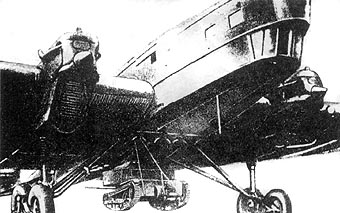
The T-27 tankette was greatly inspired by the Carden-Loyd Mk.VI. The local version was larger, but still light enough to fulfill typical tankette duties, such as reconnaissance and supply. “Airborne armored support” tests included tankettes and amphibious light tanks like the T-38. A few of the 2700 originally produced still served actively in the summer of 1941.
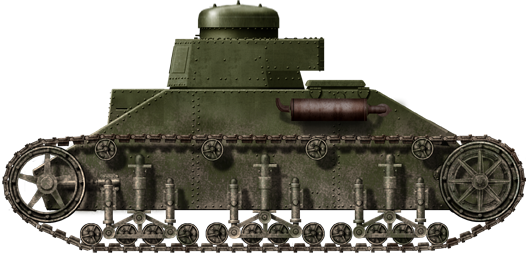
The T-19 was a light tank designed in 1929 by engineer Semyon Alexandrovich Ginzburg to fulfill multiple and contradictory specifications from the RKKA (Workers and Peasants Red Army). The requirements were changed many times, even during trials, and further complicated the delivery of a suitable preseries vehicle. It had to be fully gas-proof and amphibious, fast, well armored and armed, and easy to manufacture as well. The project was eventually dropped in favor of a licence-built version of the Vickers 6-ton.

Inspection of T-34s and crews, before departing for the front. With bigger industrial capabilities, huge forced manpower and a more pragmatic way to build tanks, the Red Army overwhelmed the Wehrmacht, despite their superior tanks and tactics.
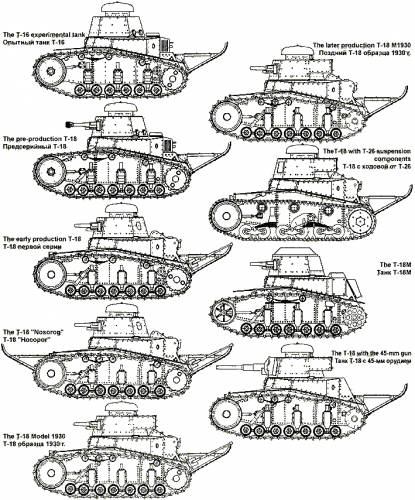
All variants of the T-16 and T-18, the first Soviet tank that entered mass-production.

The T-26, the most widely produced tank of the thirties. It was the most successful derivative of the British Vickers 6-ton (Mark E).

The BT-2 on trials. The BT series (Bystrokhodny Tank meaning “fast tank”) was directly based on the Walter Christie’s “race tank”. This was a convertible machine, which could travel on paved roads on its wheels only, without tracks.
The Soviets bought two Christie M1931 and the license to produce them. Soon after, they derived the BT-1 prototype, BT-2 and BT-3 pre-series, and mass-produced the BT-5 and BT-7. These were the fastest tanks in service in 1939, as the BT-2 was capable of 100 km/h (62 mph). It suited the Soviet “deep battle” doctrine and around 6000 machines were produced.

The T-28 was the standard medium “infantry tank”. It was typical of the late thirties, with its sluggishness, heavy armor and multiple turrets. It took a strong influence from the Vickers A1E1 Independent, and was produced from 1933 to 1941. By then, it was completely obsolete.

The BT-7 cavalry tank was derived from the Christie design. It was fast, but still lacking protection and firepower, at least compared to the standards of 1941. It was then the second most common Soviet tank besides the T-26 and played an instrumental part in the victories at Khalkin-Gol against the IJA.

The BT-7M was the last version of the Soviet cruiser tanks, upgraded in many ways. The biggest change came from the engine, derived from a diesel already tested on the experimental BT-8. The transmission, gearbox, tracks and drive sprockets were also changed, and in 1941 the protection was increased.
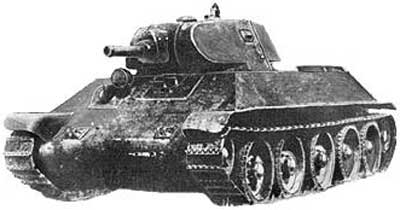
For the BT series, protection and firepower were sacrificed. In 1939-40, new designs reversed this trend and, through the A-20 and A-32, created a brand new breed of “cruisers” turned into true medium tanks. These were the direct precursors of the legendary T-34.

The T-34/76 was the most successful Soviet tank of the war. It came from a long series of cruiser tanks. The 1st pre-series vehicle is pictured here. In 1941, it was superior to any German design, successfully covering the very difficult “magic triangle” (protection, mobility, firepower), with the bonus of easy mass-production.
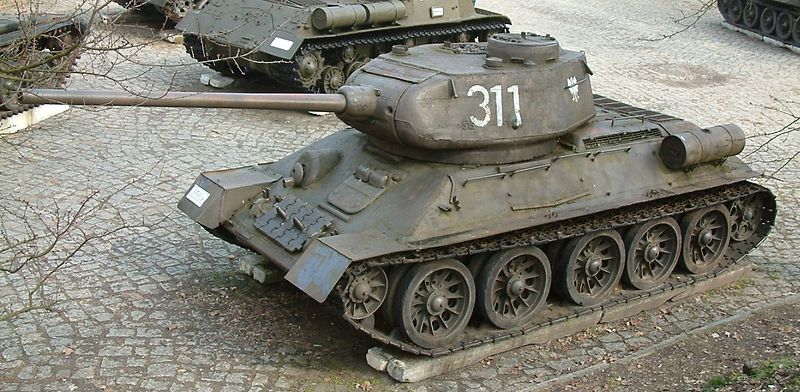
The T-34/85, a 1943 version of the legendary T-34, the most produced and widely used tank of WWII. This tank greatly contributed to the victory achieved by the Red Army. It was pivotal in all offensives, still sporting decent speed and protection, along with an upgraded armament and many mass-production improvements.
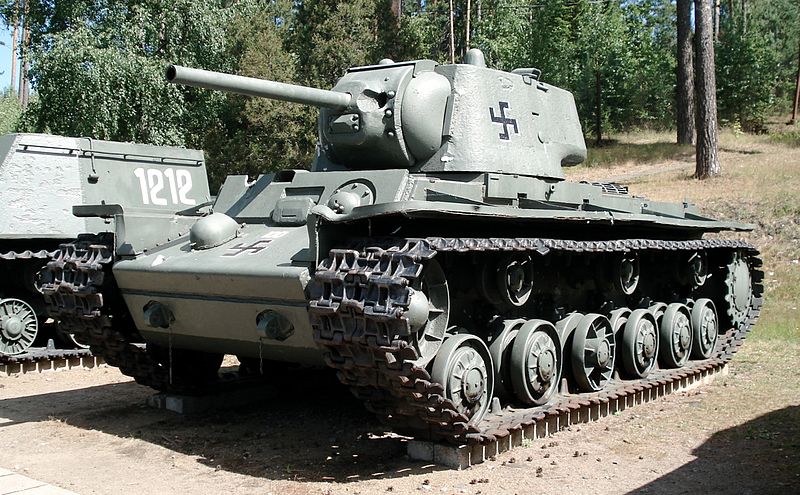
The Soviet KV-1 was named after “Kliment Voroshilov”, a famous Soviet defense minister. It became as famous as the T-34 because of its strong armor. 5220 were built from 1939 to 1943. It was the mainstay of the Soviet heavy tank units until 1944.
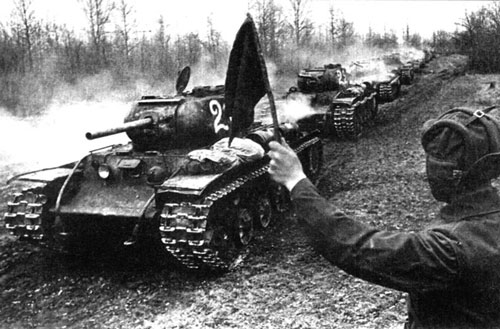
The KV-1S was a late attempt (fall 1942) to bring back some mobility to the KV-1, while sacrificing some armor and introducing a brand new, lighter cast turret. A few were built, but their development paved the way for the more ambitious KV-85.
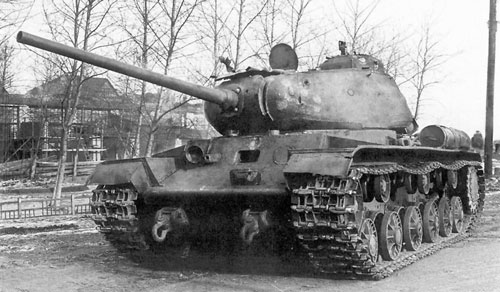
The KV-85 was a hybrid, transitional model built in small numbers. It was originally the KV-85G, which was meant to feature a modified KV-1S turret with an 85 mm (3.35 in) gun jammed inside, and would have made a horrible stopgap. The KV-85G almost entered production, but trials of the IS-85 turret on a KV-1S chassis took place, and this trial variant was accepted into stopgap production as the KV-85.

The Soviet IS-1, the true successor to the KV series (named after Joseph Stalin and sometimes written as JS-1). Armed with its 85 mm (3.35 in) gun, it was produced in small numbers, before being replaced in production by the more successful IS-2.
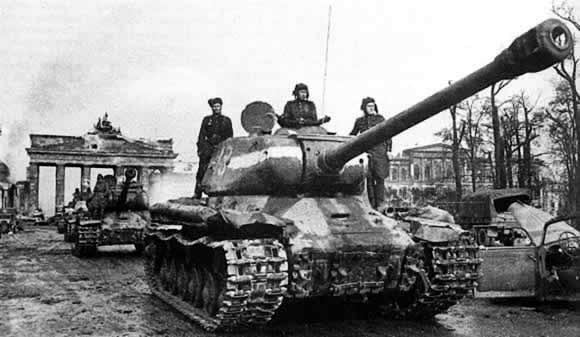
The IS-1 lacked firepower against the Tiger, so the engineers managed to equip the largely remodelled hull and turret with a massive 122 mm (4.8 in) gun, re-designating the vehicle as the IS-2.
Although reaching a new level in raw firepower, the new gun was slow to reload and it could only carry a limited number of shells. Nevertheless, it gave new confidence to the crews which could have a fighting chance against the best German tanks.
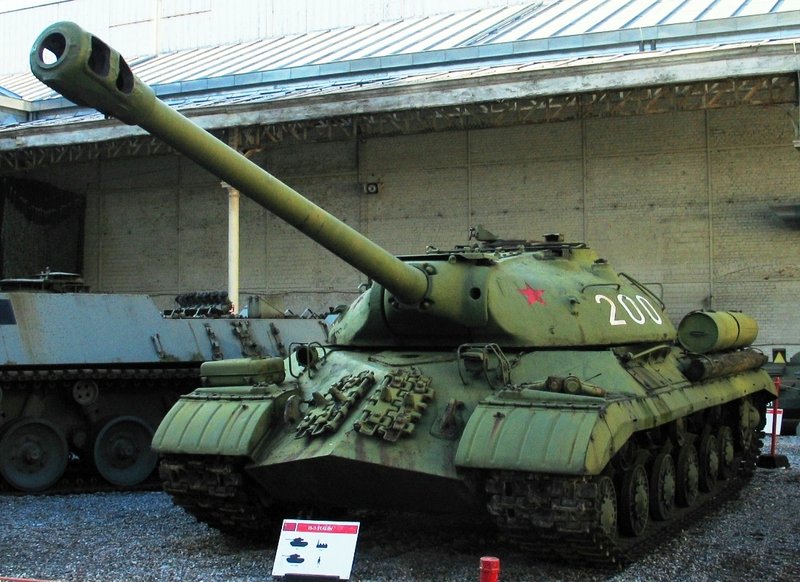
The Iosif Stalin 3 was the last of the wartime heavy tanks series. It was only entering service when Berlin fell. The turret inspired later Cold War designs.
The series continued on until the death of Stalin in 1953. The last was the IS-10 (T-10 after 1953), which came after the prototypes IS-6 and IS-7, and the postwar IS-4 (only 250 built).
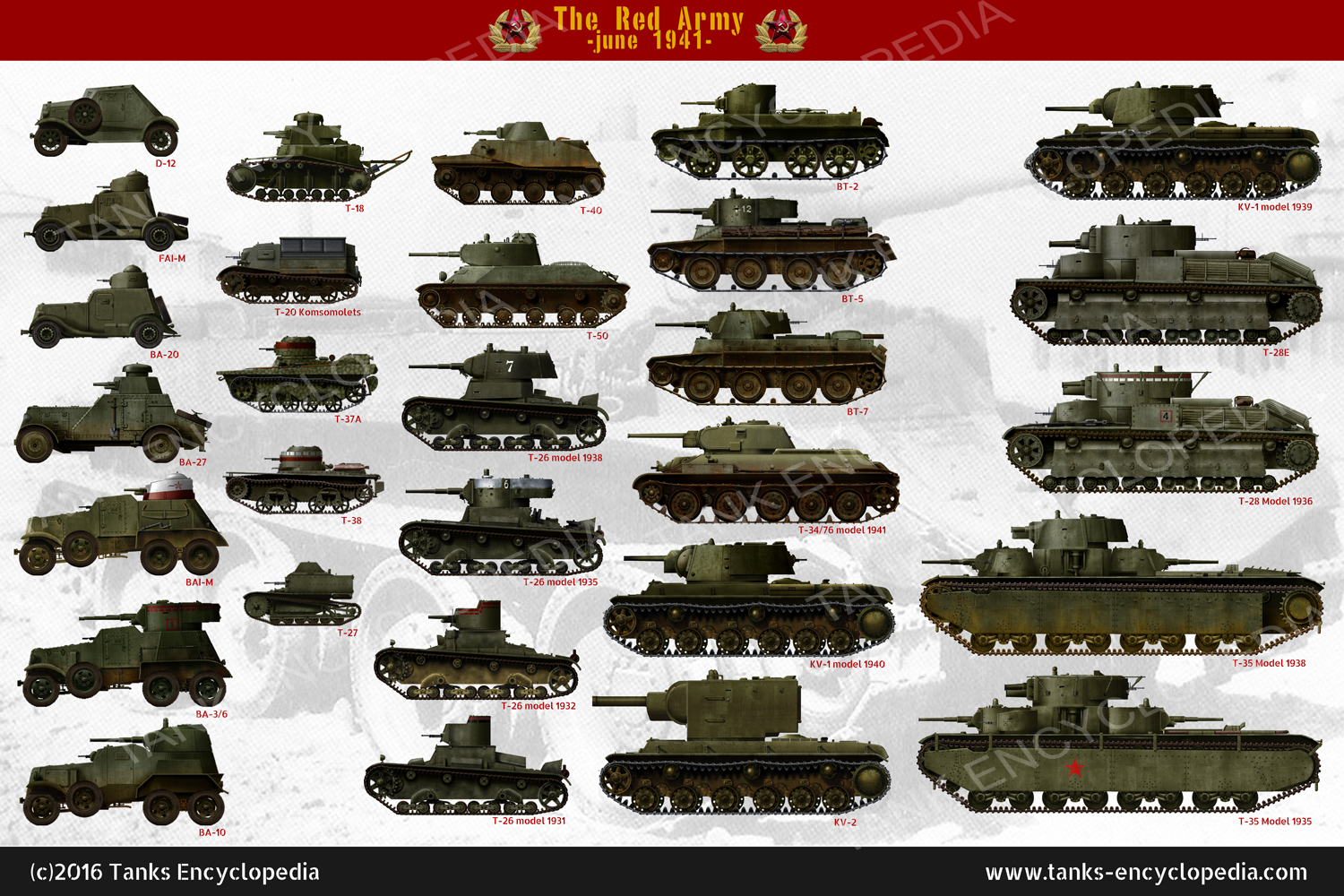
Soviet Tanks in June 1941 (Operation Barbarossa)
Light tanks (Лёгкие танки – Lyohkie tanki)
The Soviet Union not only bought Vickers tanks, but also tankettes. The world-famous Carden-Loyd model of 1926 was bought, completely rebuilt and improved as the T-27. Indigenous models like the T-17 and T-23, based on current light models, never fulfilled the requirements and remained only prototypes. The T-27 was still, at least superficially, a faithful replica of the British model. 2750 units were produced before 1933 by the Bolshevik Factory and GAZ. This lightweight machine was used in original experiments like various airborne tank trials.
By 1941, they had all been removed from frontline operations, serving as gun tractors and in training units. Another British product which was held in high esteem by the Soviet government was the Vickers light amphibious tank, designed for the export market. The Commission envisioned it roaming the northern Russian wilderness and, after purchasing the license to build them, the T-37A and the T-38 were mass-produced from 1933 to 1939.
They were used mainly as scouts, but some were tested for airborne operations, dropping them into lakes, being part of the “deep battle” tactical developments. Eventually, the USSR had more amphibious tanks than any other nation by the outbreak of World War Two.
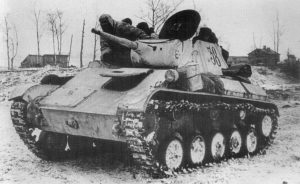
The T-70, certainly the most prolific light tank series at that time.
T-18
960 built – obsolete by 1941, used for training. Some 70 were up-gunned with a HV 45 mm (1.77 in) gun in 1941, and used as bunkers.
T-27
2750 built – obsolescent tankettes, still used as scouts, armed gun tractors and for training.
T-37A
Around 1200 built between 1933-34, mainly used in swampy areas, like the Pripet marshes.
T-38
1300 built – more recent (1937-39), some still used as scout tanks.
T-26
10,300 built plus 1700 variants – formed the bulk of Soviet tanks forces in 1941.
T-46
Approx. 4 built – Enhanced version of the T-26. Cancelled due to high cost.
T-40
222 built – a modernized amphibious tank (1940). However, it was also the last.
T-50
69 built – a sloped-design model (1941), its cost halted production.
T-60
6292 built – a non-amphibious, successful model (1941-45).
T-70
8226 built – an evolution of the T-60, produced until 1948 and later sold to many client states.
T-80
122 built – a two-man turret evolution of the T-70. However, production was quickly cancelled.
Cruiser tanks (Быстроходные танки – Bystrokhodnye tanki)
Several tank projects – the experimental “Grotte”, the short-lived T-24, the T-28, which was largely based on the T-18 suspension, and the ubiquitous T-19, a failed “jack-of-all-trades” – proved the Soviet industry not up to the task of delivering a tank worthy of western standards. The general staff once again turned westwards for inspiration. The Soviets decided to experiment with cruiser tanks, as a part of the “deep battle” tank warfare theory. Strangely, this fast tank (“Bystrokhodnyi Tank”) or “BT”, took its roots within the US ordnance, as a derivative of the Christie M1931.
Designed by a talented engineer, Walter J. Christie, the M1931 was an experimental fast tank aimed to replace the cavalry. Since the US cavalry branch was forbidden by law from having tanks, it employed armored cars, but at that stage, these had mediocre off-road capabilities.
Christie pioneered many areas with his “convertible tank”. It could run without tracks, making it suitable for the cavalry, which could present them as “convertible armored cars”. It was for the first time equipped with a radial aviation engine, in a time when most tanks of the time had bus, tractor or truck engines. This proved lightweight, very powerful and compact. It was the first tank featuring immense vertical (helicoidal) suspension (known as the Christie suspension) coupled with very large rubberized roadwheels, allowing for lightning-fast off-road rides.
This was indeed a very impressive package in action and the press soon nicknamed it “the flying tank”. Impressed, the Russian commission bought two Christie M1931 tanks (which arrived turretless, much to the Soviets’ chagrin) and the license to manufacture them. The suspension and general design was produced under license or strongly influenced designs in many other nations, including Great Britain.
The USSR fielded no less than 8000 of these in the summer of 1941. The BT itself was an inspiration for the A-20 and the A-32, prototypes with full sloped armor and fixed tracks, which led to the T-34, probably one of the most influential tank design of Word War Two.
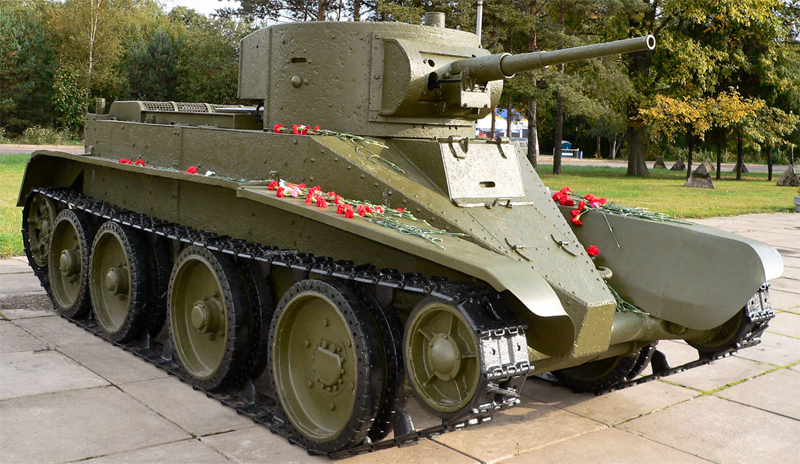
The BT-5 Series 2 of cavalry tanks. These clearly traded protection for speed, seen as an “active” form of protection in itself.
BT-2
650 built – 1932-33, successful cruiser or fast tank (based on the Christie M1931).
BT-5
1884 built – 1933-35, improved cruiser tank.
BT-7
5556 built – 1935-41, main Soviet cruiser tank. The improved BT-7M (1938) was the direct ancestor of the A-32 and the T-34.
Medium tanks (Средние танки – Srednie tanki)
The T-34 was a “game changer” on the battlefield. It was rarely seen during the summer of 1941, since production was interrupted and entire factories were dismantled and relocated eastwards, to the foothills of the Ural mountains. Soon, the complex grew considerably and became so crammed with factory lines that it became known as “Tankograd”.
Its goal was mass-production on a truly amazing scale, rivaling the US industry. Not only could this complex (and others, like at Stalingrad) provide entire armored divisions in a month, but the Stavka soon restructured the number of types to be produced. Only two contenders were chosen, the T-34 and the KV-1.
The first one was everything the perfect tank could be in 1941. It was fast and powerful, with a highly reliable engine, simple to manufacture (and the base design was simplified even more during the war), had a high-velocity 76 mm (2.99 in) gun suitable against any German tank of the time. Most of all, it featured thick and well-sloped armor, which combined deflecting characteristics as well as an artificially increased protection against direct fire (with a 30 degree slope, 60 mm/2.36 in became equivalent to 90 mm/3.54 in of solid steel). This was the first tank really successful in combining firepower, speed and protection in a single package, without sacrificing any aspect.
However, the Soviet choice to mass-produce this kind of tank even after the war (in the fall of 1943 it was upgunned to 85 mm/3.35 in) was quite opposite to that of the German engineers, under the strong pressure from Hitler. The Fuhrer was taken over by the so-called uber-tanks, large, over-engineered tanks which he thought could turn the tide of the battle, even facing overwhelming opposition.
One thing is certain – the T-34 had a tremendous influence on “2nd generation” tank designs until the end of the war. The Panzer V “Panther” was conceived as a direct response to it.
The T-44 was a short-lived attempt to create a “universal tank” (marrying aspects of the T-34 and KV-1) to ease mass production by commonality. It was a failure then, but the idea lived to be reincarnated with success after the war in the main battle tank concept.
T-28
503 built – early Soviet medium tank, multi-turetted, 1934-41. Through its tonnage and size it was more of a “medium heavy”.
A-20, A-32, and A-34
1939-40, prototypes for the T-34.
T-34/76
35,120 built – 1940-43, main Soviet medium tank, was equipped with a 76.2 mm (3 in) gun.
T-34/85
48,950 built – 1943-58, up-gunned version of the latter, with ZiS-S-53 and DT-5 guns. Biggest tank production of the war when combined with the model 76.
T-44
1823 built – 1943-44, improved version and designed successor of the T-34.
Heavy tanks (Тяжёлые танки – Tyazhelye tanki)
Heavy tank design was also influenced by the need for breakthrough tanks. These were also tributary to the “deep battle” tactical approach of armored types. However, there were few heavy tanks in existence by 1930. France had the obsolescent FCM 2C from the 1920s, while Great Britain and the USA had the Mk.VIII “Liberty”, the last of the WWI rhomboid models. In Britain, Vickers produced the A1E1 Independent, a modern design which also introduced a multi-turreted configuration.
Only one tank was built, and it had a tremendous influence on the first Soviet design, the T-28. This was classed as a medium, but had all the characteristics of a breakthrough tank. It was slow and equipped with a howitzer, only suitable against concrete fortifications. The T-35, based on the T-28, appeared later as the first “true” heavy tank, still of this generation of multi-turreted models.
The T-35 appeared from the same kind of personal fantasy both dictators (Hitler and Stalin) shared. This obsession with mighty invincible “land battleships” reflected the state leader’s personal grandeur, and turned into superb tools for propaganda. However, these dinosaurs were not practical war machines and the multi-turreted T-35 is a formidable example of this utter failure. The following KV and IS series were more reasonable and infinitely better, although still sacrificing mobility for protection and firepower.

The Soviet SMK multi-turreted heavy tank prototype, Red Army, June 1941.
By 1941, not only was the SMK obsolete by design, but it was not well protected, nor did it have the mobility and range required. Like the German Neubaufahrzeug, it was mostly useful for propaganda purposes. The SMK evolved into a single-turreted version armed this time with the F-34 anti-tank gun. Better known as the KV-1 (after the defense minister, Kliment Voroshilov), this new model was characterized by the more versatile armament and classical, straight, but almost impregnable armor. Weighing nearly 50 tons, it was the backbone of Russian heavy tank units in 1941.
Modernized as the KV-1S, then KV-85, this model was soon replaced by the IS-1 (for “Iosif Stalin”) and the up-gunned IS-2 in 1944, which could deal with the latest German tanks. The the IS-3, entirely revised, appeared too late, but set the tone and appearance for all upcoming Soviet heavy and medium tanks to come during the Cold War.
T-35
61 built – 1934-38, Soviet main heavy tank until 1939. Served only as propaganda machines and considered unreliable by 1941.
KV-1
5219 built – 1939-1943, main frontline heavy Soviet tank.
KV-2
225 built – 1938-39, variant of the KV-1 equipped with a 152 mm (5.98 in) howitzer.
KV-85
143 built – 1943, improved KV-1S, transitional model.
IS-1
207 built – 1943-44, redesigned version of the KV-1.
IS-2
3854 built – 1943-45, modernized version of the IS-1, with a much more powerful gun.
IS-3
2311 built – 1944-46, evolution of the IS-2 with a completely revised hull and turret. Served after WW2.
Tank destroyers (Противотанковые САУ – Protivotankovye SAU)
Attempts to make tank destroyers only came during the 1941 summer campaign. The first were improvised on Komsomolets tractors, but the crews operating the gun were left completely unprotected. Some very old T-18s were equipped with the modern 45 mm (1.77 in) guns, with mixed success. But the true mass-production came in 1942-43, first with assault guns like the SU-76, when it was discovered that high velocity field guns could still pack a deadly punch at short range. Moreover, they were easier to produce than regular tanks and could be delivered by second-grade factories with low-quality tooling equipment and unskilled labor. But the first true “tank killers” were also the first vehicles to use new generation guns like the 85 mm (3.35 in) and the 100 mm (3.94 in), based on the T-34 chassis. Their production was relatively moderate because by early 1944, the up-gunned T-34/85 arrived en masse to the frontline. The ISU-122 was a short-lived vehicle using a heavy 122 mm (4.8 in) gun and replaced by the regular mass-produced IS-2 tank.
ZIS-30
100 built – 1941, conversion of the T-20 Komsomolets light tractor.
ZSU-37
75 built – 1945, light SPAAG, based on the T-60/T-70 chassis.
SU-76
14,230 built – 1942-45, light SPG tank-hunter, based on the T-70 chassis.
SU-85
Around 2000 built – 1943-44, medium SPG tank-hunter, based on the T-34/76 chassis.
SU-100
2330 built – 1944-45, medium SPG tank-hunter, based on the T-34/85 chassis.
ISU-122
1735 ISU-122 and 675 ISU-122S built – 1944-45, heavy SPG tank-hunter, based on the IS-1 chassis, equipped with the A19 gun.
Self propelled artillery (Samokhodnye artilleriiskie ustanovki, or SAU)
Many prototype SPGs were tested during the late thirties, most based on the T-26 chassis. The SU-5 was probably one of the first, equipped with a 76 mm (2.99 in) mortar howitzer. Some BT fast tanks were also derived into small series of support tanks, but the gun was operated from a fully revolving turret. During WW2 the bulk of the type was represented by the SU-76, which was an assault gun, but commonly used as a tank hunter. The first true SPGs came in 1943-1944 only in relatively small quantities compared to other tank models.
The SU-122’s raw power with HE rounds was found quite efficient against German heavy armor, as seen at Kursk. Later, an even more potent weapon was adopted, the 152 mm (5.98 in) howitzer, also capable of jamming the turret of German tanks or penetrating the turret or hull in parabolic, indirect fire. Both models were used as improvised tank-hunters with relatively good results. Their main contribution was as infantry support against any kind of fortifications throughout the two last years of the war, as German forces retreated in a large-scale defensive war, through well-prepared defensive positions.
SU-122
1150 built – 1943-44, medium SPG based on the T-34 chassis, with a 122 mm (4.8 in) howitzer.
SU-152
704 built – 1943-44, heavy SPG based on the KV-1S chassis, with a 152 mm (5.98 in) howitzer.
ISU-152
1885 built – 1944-45, heavy SPG based on the IS-1 chassis, with a 152 mm (5.98 in) howitzer.
Armored cars (Бронеавтомобили – Broneavtomobili)
BA-27
215 built – 1928, first mass-produced Soviet armored car.
FAI/FAI-M
600+ built – 1934-36, early Soviet armored car.
BA-20
1424 built – 1936-39, main light Soviet early armored car.
BA-3/6
566 built – 1933, heavy armored car. T-26 turret.
BA-10
3311 built – 1938, late heavy armored car, wartime version. T-26 model 38 turret.
BA-11
About 20 built – 1941, last Soviet heavy armored car, production stopped because of the invasion.
BA-64
9110 built – 1942, standard wartime light scout armored car, also produced postwar until 1960.
Links & resources
Various documents about Soviet armor in WW2
A 35-pages portfolio about WW2 Soviet armor (in Russian)
A 81-pages study about the T-28/29 prototype development (in Russian)
Отечественные Бронированные Машины, Том 1 1905-1941. А.Г. Солянкин, М.В. Павлов, И.В. Павлов, Е. Г. Желтов. / Domestic Armored Vehicles, Vol. 1. 1905-1941. A.G. Solyankin, M.V. Pavlov, I.V. Pavlov, E.G. Zheltov
Отечественные Бронированные Машины, Том 2 1941-1945. А.Г. Солянкин, М.В. Павлов, И.В. Павлов, Е. Г. Желтов. / Domestic Armored Vehicles, Vol. 1. 1941-1945. A.G. Solyankin, M.V. Pavlov, I.V. Pavlov, E.G. Zheltov
Soviet T34 tank aces
Illustrations

KV-1S (for “Skorostnoy”, “fast”) model 1942 with spoked wheels, unknown unit, Central front, fall 1942.

KV-1S model 1942 with the new late roadwheels, lead or commander tank, winter 1942/43.

KV-1S model 1943, unknown unit, Southern front, summer 1943.

KV-1S model 1943, unknown unit, Eastern Prussia, winter 1943/44.

KV-1S, late production, unknown unit, Berlin, May 1945.
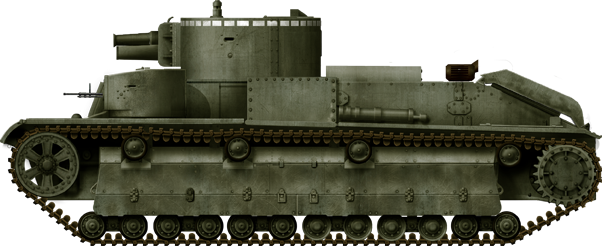
A model 1933 T-28, early production version, in the maneuvers of 1935, with unit markings. It is similar to those paraded in 1933 in the Red Square.
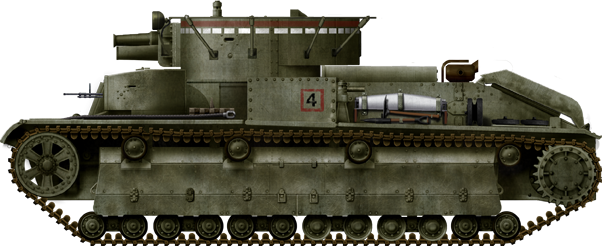
An early model 1933 T-28A with the short barreled, low-velocity gun. It was retrofitted with the 1934 turret basket, rear ball mount and AA mount. It also has the “horseshoe” radio type antenna. Manchuria, battle of Nomonanh Plateau, August 1939.
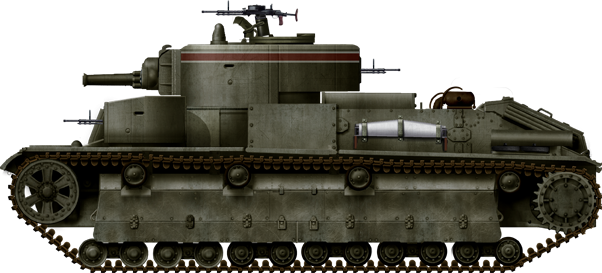
A model 1938 T-28B with the longer barreled gun, which had some, if limited, AP capabilities. Invasion of Poland, September 1939.
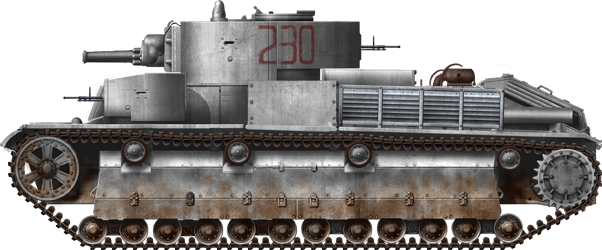
A model 1938 T-28B, here in washable winter camouflage. Many of these were lost during the early stages of the Winter War in Finland.
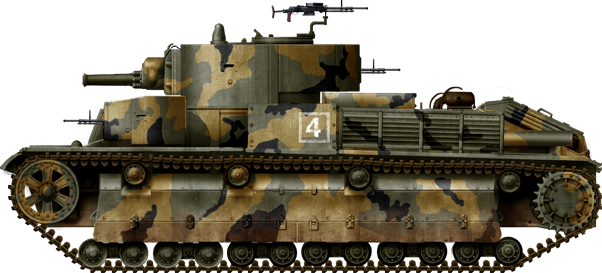
A late T-28E (upgraded with appliqué armor), available when the German invasion took place in June 1941. Up to 35 extra panels were welded, 23 to the hull, 8 on the main turret and 4 to each auxiliary turret. Many tanks were camouflaged in the summer of 1941. This is one from the 220th Armored Brigade, belonging to the 55th Infantry Division, in the summer of 1942.
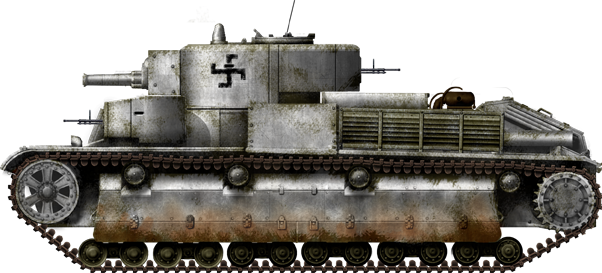
A captured Finnish T-28M. Most kept their washable winter camouflage, but were later repainted in Finnish field green, a pale watergreen, for summer operations. Finnish models had extra protection on the external gun mantlet.
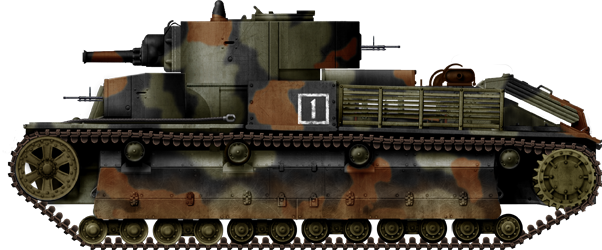
T-28M (or T-28E) of the 1st “Red Banner” Tank Division, 1st Mechanized Corps, Karelian Front, June 1941.

A-20 (BT-20) prototype.

A-32 prototype.

BT-5, early pre-series vehicle (1933), with the early heavy type roadwheels and cylindrical turret with basket.

BT-5, early type, with the cylindrical turret. One of the 100 BT-5s sent to the Spanish Republicans in 1937. This one was part of the 3rd Bandera Aragon, later captured by the Nationalists.

A BT-5 model 1933 from the Spanish Nationalist forces, 1938. The turret roof was painted white with a large black cross.

BT-5 TU Model 1933, radio command version, Khalkin Gol, August 1939.
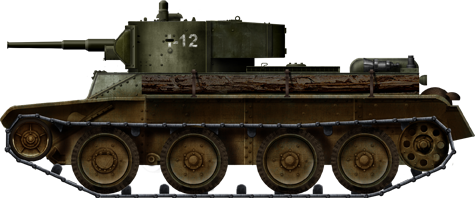
BT-5, late production version equipped with the T-26 turret, Southern Front, spring 1942. Notice the wooden beam, attached with leather straps.

BT-5 model 1934 in winter camouflage, Winter War, Finland, December 1939.

Camouflaged BT-5 model 1934 of an unknown unit, summer 1941.

BT-5, late type, Ukraine, summer 1941. “Forward to Victory” slogan.

BT-5 with a three-tone camouflage, British-Soviet Invasion of Iran, August 1941.

BT-5, late model, stripped winter camouflage, December 1941.

BT-5A, howitzer support version, summer 1941.
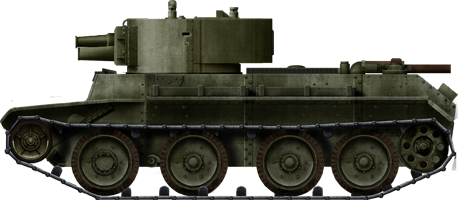
A BT-7 Artillery vehicle with its new turret. It is also sometimes called the BT-7A

Soviet T-16/MS-1, original prototype, 1927.

Preseries T-16, 1929. Trials led to many changes. These vehicles were displayed in the Red Square November 1929 parade.

T-16 model 1930, transitional early version. This vehicle is preserved to this day.

T-18 model 1930, in exercises near Moscow. Operational communication was performed using signal flags.

T-18 of the Ossoaviakhim from a training company near Kiev, 1936.

T-18M converted in July 1941. About 200 were upgunned with the T-26’s 45 mm (1.77 in) 20K mod. 1932/34 high velocity gun. They were actually used as stationary pillboxes and did not have their, engines, or drive systems. According to photos, ome still appear to have had their tracks, but others did not.

Fictional livery of a surviving T-18M from the summer campaign, Ukraine, winter 1941/42.

Experimental SU-18 SPG. Several prototypes are claimed to have been built in 1930-33. Never entered production.
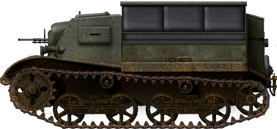
Standard Komsomolets in the 1930s
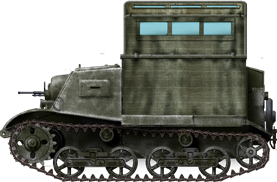
T-20 with tarpaulin
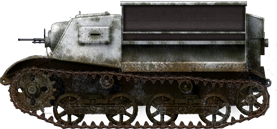
Komsomolets T-20 in winter camouflage, 1941-42.
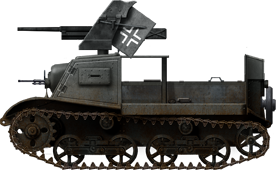
German 3,7 cm Pak 36/37 auf artillerie schlepper 603(r) light tank hunter conversion, 1942.
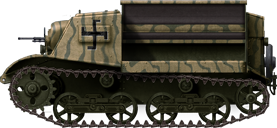
Captured Finnish Komsomolets.
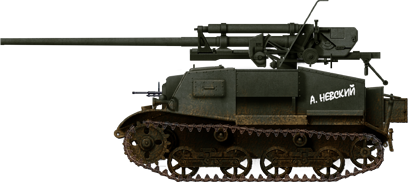
The ZiS-30 tank hunter which was based on the T-20
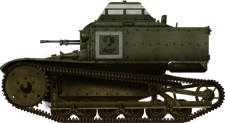
Early model T-27, unknown unit, 1931.
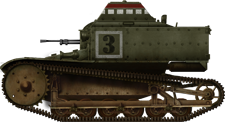
Early model T-27, Far East Asia, 1932.
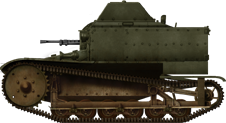
Modified late T-27, 1937.
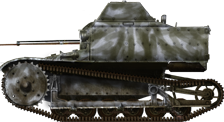
T-27 testing the PTRS-41 AT rifle during the Winter War, Finland, December 1939.
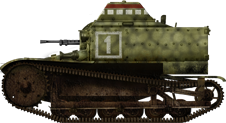
Camouflaged T-27, during exercises in 1938, with the “spotted pattern” also applied on scout amphibious tanks.
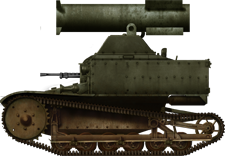
T-27 testing a rocket launcher, date unknown.
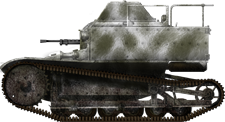
Transport vehicle during the Winter War, Finland, January 1940
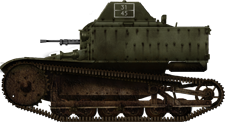
T-27 in the autumn of 1941, second line training unit.

T-50 of the 1st Red Army Tank Division, in the vicinity of Leningrad, August 1941.

Late model T-50 of the 488th Separate Tank Battalion, Transcaucasian front, North Combat Group, October 1942.
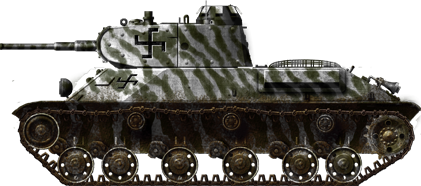
Up-armored T-50 captured by the Finnish, “Niki” R110 of the heavy tank company, winter 1942-43.
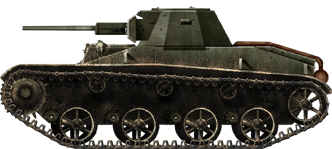
Early production T-60 without storage bins, 1941.
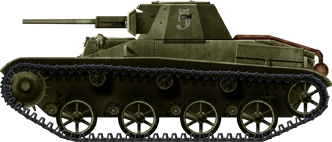
Regular T-60 of a front-line recce battalion, 1942.
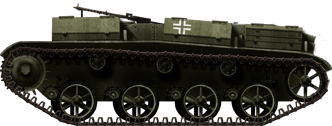
Beutepanzer T-60. The Wehrmacht managed to capture dozens of T-60s following the latter stages of Operation Barbarossa and after. They were quite happy with these, re-used as artillery tractors and supply vehicles.
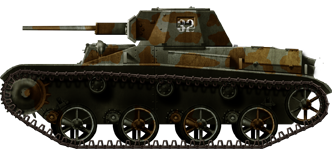
Camouflaged T-60 model 1941, a rare occurrence, generally improvised with some form of brown color.
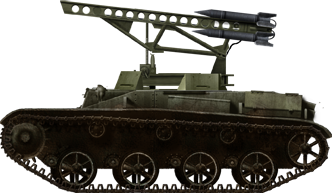
T-60 BM-8-24 Katyusha multiple rocket launcher, 1941.
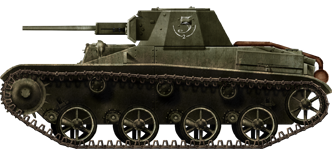
T-60 model 1941 of an unknown unit, 1942. The easiest way to recognize these are their spoked road-wheels.
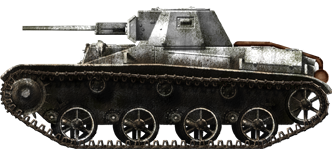
T-60 model 1941 in provisional washable white paint, winter 1942.
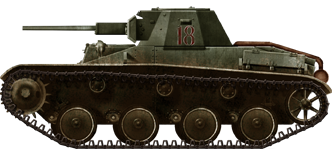
T-60 model 1942 (unknown unit), in late 1942. Due to increased armor, these were given stamped road-wheels.
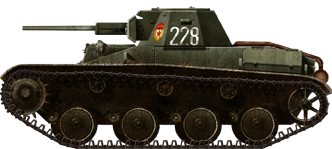
T-60 model 1942 belonging to the Red Guard recce organic unit.
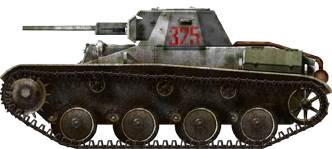
T-60 model 1942 during the winter of 1942-43.
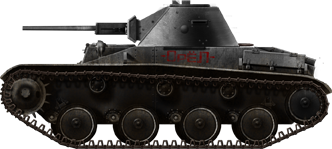
Experimental T-60 with a T-40 cast turret, rearmed with a 20mm ShVAK.
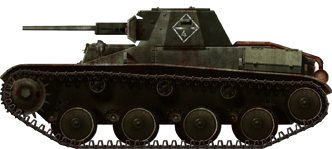
T-60 model 1942. The narrow tracks were a liability in case of mud and snow.
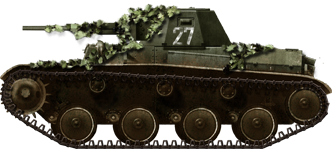
Late production T-60 model 1942, as seen in 1943.
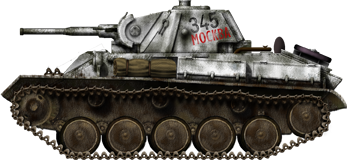
Early T-70 number 345 “Moskow”, winter 1942
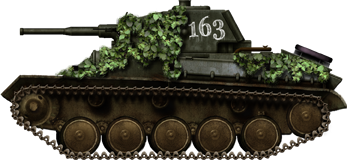
Early camouflaged T-70, spring 1943.
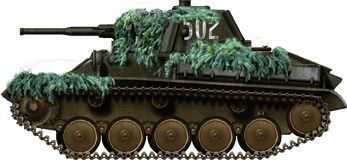
Unknown T-70 in manoeuvers with improvized pine foliage camouflage
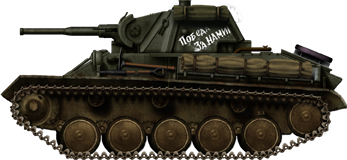
Unknown T-70/T-70M
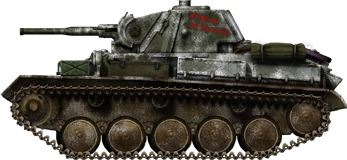
T-70 in winter paint with a patriotic slogan
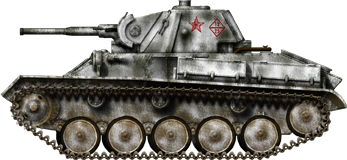
T-70 in winter paint, 1943/44
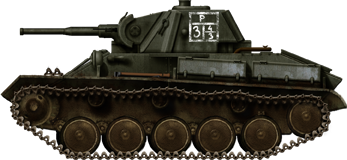
T-70, unknown unit
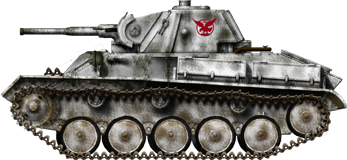
T-70 of the 6th Artillery Brigade, Bielorussian Front, February 1944
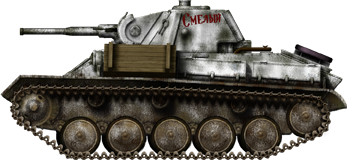
Unknown winterized T-70, with extra protection, fall 1944
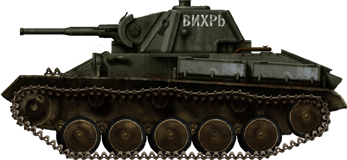
T-70M from the 28th Guards Tanks Brigade
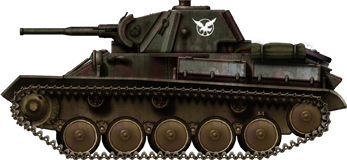
Unknown T-70 from an artillery division
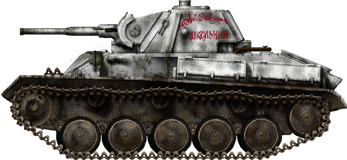
T-70M offered by funds from the Schoolchildren Avt. Div. Gorky, February 1943
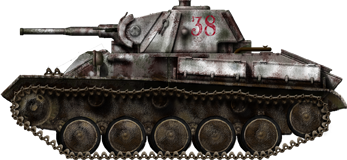
T-70M from the Leningrad Front, Avt. Division Gorky, February 1943
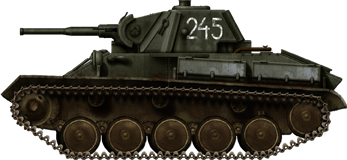
Polish T-70M in 1945

Turretless Beutepanzer T-70 (captured T-70) used as supply carrier.
_Summer1943.png)
PzKpfw T-70 743(r) Summer 1943. Sand vermicels over dunkelgrau.
StugAbt276SchlossbergRegionEastPrussiaNov1944.png)
PzKpfw T-70 743(r), Stug.Abt.276 Schlossberg, East Prussia, November 1944
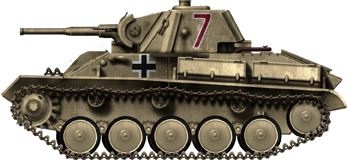
Beutepanzer PzKpfw T-70 743(r), Verkstattzug 14 der 5 (verst.) Polizei Panzer Kompanie

T-37A model 1933 early production version, Kiev large maneuvers, 1935. A white cross was painted on the turret top for aviation.

A camouflaged early production T-37A, part of the September 1939 Polish invasion.

T-37A during large scale maneuvers, Kiev, 1935. Notice the camouflage variant with clear green spots. The red band identifies a “home” unit.

Early T-37A of the organic Independent Recce Battalion of the 11th Tank Brigade, Halha River, battle of Khalkin Gol, May 1939.

T-37A of the 172nd Reconnaissance Separate Battalion attached to the 142nd Rifle Division. It has prewar unit markings denoting a tank from the 2nd company/1st battalion. Northern front, July 1941.

T-37A in winter livery. It belonged to the 9th Army Zone, 177th independent reconnaissance battalion of the 122nd Rifle Division, Finland, December 1939.

T-37TU (radio version), 177th Separate Recon Battalion of the 122nd Rifle Division, Finland, January 1940.
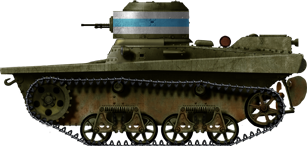
Captured Finnish T-37A, spring 1941.
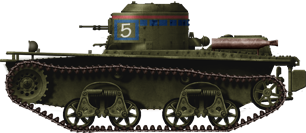
Early production T-38, Red Square parade, Moscow, May 1937.
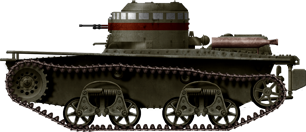
Pre-war standard T-38, unknown unit, 1938.
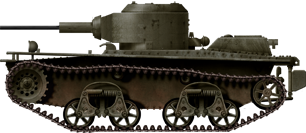
Up-gunned T-38T with a 20 mm (0.79 in) ShVAK in 1938, used for tests.
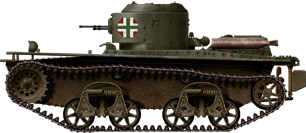
Hungarian captured T-38, Ukraine, 1942.
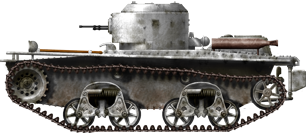
T-38 of the 18th Tank Battalion, 13th Army, Karelian Isthmus, February 1940.
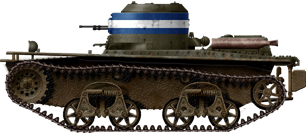
Captured Finnish T-38B pressed into operations, 1940.
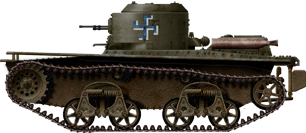
Finnish T-38 kept as a trophy, summer 1942.
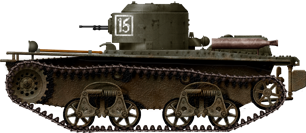
T-38 of an organic unit of the Independent Light Tank Battalion, Leningrad Front, Nevskaya Operative group, October 1942.

Early production T-40, 1940.

T-40 of a composite brigade in the summer of 1941.

Camouflaged T-40 in a three tone camouflage in the fall of 1941.

T-40 near Moscow, 1941.

T-40 armed with a 20 mm (0.79 in) ShVAK autocannon later adopted on the T-60 and T-70, Moscow area, winter 1941-42.

T-40 BM-8-24 Katyusha rocket launcher in 1942.

Early production SU-85, Voronezh front, October 1943. It was a painful conversion of the SU-122 howitzer self-propelled carriage and the first large-scale production tank destroyer in Russian service. Its main 85 mm (3.35 in) D-5S gun was derived from the anti-aircraft 52-K.

A SU-85 with a provisional white livery in February 1944. In some cases, just like the T-34, shortages of rubber bands meant that some tanks were offered full metal wheels – a provisional measure which lasted long. These quickly deteriorated the track links. Most of the time, a full set of metal wheels were given, but sometimes also a single pair, or the reverse solution. Practice showed that mixed fittings were not always a good choice.

Captured SU-85s in German service (BeutePanzerjäger SU-85 748(r)) were not uncommon in 1943-44. Many such vehicles were disabled and evacuated by their crews, then towed and repaired by the Wehrmacht, which tried to replace depleted units. These kind of captured tank hunters were highly praised, and were given very large Balkankreuz for identification, as a custom camouflage. Here is an Ukrainian steppe summer livery for this Beutepanzer SU-85(R), which fought with the XXIIIrd Panzerdivision.

Late production SU-85M, Berlin, May 1945. The SU-85M was a late transition model, designed to empty existing stocks of D5-T 85 mm (3.35 in) guns. The commander cupola was derived from the T-34/85. The casemate and sloped hull were identical to the next SU-100

SU-85M, Seelow heights, March 1945.

Early production vehicle, October 1944.

Early production SU-100, Northern Front, fall 1944.

Mid-production SU-100, Poland, January 1945.

Mid-production SU-100 in Berlin, May 1945.

SU-100 Soviet tank destroyer. Late production version, unknown unit, May 1945.

SU-100 of the People’s Liberation Army, on parade in Beijing, 1954.

SU-152, Eastern Front, Mius River, September 1943.

SU-152, unknown unit, Kursk, summer 1943.

SU-152 during Operation Bagration, summer 1944.

SU-152, 1824th SP artillery regiment, Crimea, Simferopol, April, 13, 1944.

SU-152, 2nd Baltic Front, winter 1944-45.

Beutepanzer SU-152, Fz.Stb-22, 1944.

Polish SU-152, eastern Germany, 1945.

SU-152 of the 1359th Self Propelled Artillery Regiment, 2nd Baltic front, Estonia 1944.

SU-152, unknown unit, eastern Prussia, early 1945.

A first production SU-122, in March 1943.

An early production SU-122 in December 1942, Leningrad front, Smierdny region. By then, these were combined in small four-unit squads with four SU-76 tank destroyers. Two of these squads formed a battalion. Notice the washable white paint and definitive front wheels.

SU-122 at Kursk, July 1943. During the most desperate moments of this battle, some SU-122s fired at close range and sometimes successfully dislodged Tiger tank turrets. The sheer destructive power of a HE 122 mm (4.8 in) shell was in itself a potent force to be reckoned with.

A SU-122 at Kursk, July 1943, freshly arrived from the factory with a rather unusual sand livery over the usual olive green. Identification numbers were hand-painted, probably in the storage lot or directly over the transporting rail carriage.

A mid-production SU-122, winter 1943, with a rare improvised camouflage over the usual washable white paint. Also notice some roof sights and hatches painted in red.

A rare SU-122 in German serive. During the early year 1943, the Wehrmacht was still able to launch some localized counter-offensives on a rather dynamic, but mostly defensive front, with the initiative definitely into Russian hands. During these events, both German and Russian tanks were disabled and captured by their respective adversaries. There are few records of captured SU-122s, and even less photographic evidence, but they were probably camouflaged and flagged with a wide Balkan cross, and often swastika flags over the top.

ISU-122, summer, 1944

ISU-122, unknown unit, east Prussia, 1944

ISU-122, unknown unit, Germany, 1945

ISU-122, winter camouflage, Germany, 1944-45

ISU-122 camouflaged, unknown unit, 1944

ISU-122, 338th Guards Kirovgradarsky heavy self propelled regiment, 1945

ISU-122S, unknown unit, Poland, summer, 1944

ISU-122S

ISU-122S, Berlin, April, 1945

ISU-122S, Hungary, March, 1945

ISU-122 of the People’s Liberation Army, on parade in Beijing, 1954.

BTT-1 heavy duty armoured recovery vehicle after the war. Many were resold to the Egyptian Army, well into service in the 1980s.

SU-76, winter 1942. Only 360 were delivered.

SU-76M, early production, February 1943.

SU-76M, unknown unit, summer 1943.

SU-76M, 8th SPG Military Brigade, Belarus front, February 1944.

SU-76M, unknown unit, winter 1943-1944

SU-76M, 6th Guards Tank Army, Austria, April 1945

SU-76M “Courageous” from the Transbaikal Front, August 1945.

SU-76M, 7th Mechanized Corps, winter 1943-44

SU-76M with a spotted winter camouflage made with a brush, Belorussian front, winter 1944.

,em>SU-76M, unknown unit, Eastern Prussia, April 1945.
.png)
German SU-76M, 5th SS Panzerdivision “Wiking”, Poland, summer 1944.

Tanks Encyclopedia rendition of the SU-100Y
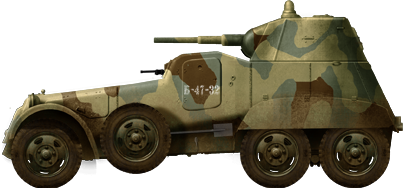
BA-11 in a camouflaged livery, summer 1941.

BA-20 of the 56th Tank Brigade, autumn 1941

Reconnaissance vehicle of the 54th tank Brigade, autumn 1941

BA-20RK of the the 135th Tank Brigade, summer 1941

BA-20M attached to the 20th Brigade, November 1941.

German Schienenpanzerwagen PzSp Wg202(r) in winter camouflage

Finnish BA-20, one of the nine captured and used in combat.

Possible appearance of a Chinese BA-20M.

Vehicle of the Feldgendarmerie in Russia, summer of 1944.
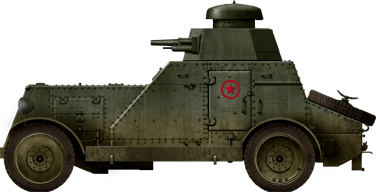
BA-27, motorized unit of the 11th Rifle Division, Leningrad Military district, 1931.
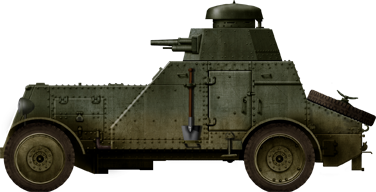
BA-27 used as a training vehicle in the summer of 1941.
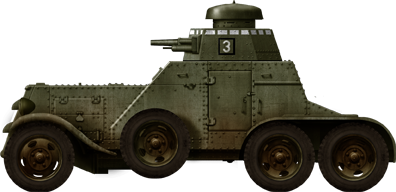
BA-27M in 1939. Only 20 were built, but influenced future models like the BAI-M.

BA-3 of the 9th Armored Car Brigade, battle of Khalkin Gol, August 1939.

BA-3 of the 8th Armored Car Brigade, battle of Khalkin Gol, July 1939.

BA-6 of the Spanish Republican Army, defense of Madrid, May 1937. Possibly fictional colors.

BA-6 of the 9th Armored Car Brigade, radio version, Nomonanh plateau, summer 1939.

BA-6 during the Winter War (unknown unit) fitted with its track kits, southern Ladoga lake sector, January 1940.

BA-6 of an unknown Armored Car Brigade, Leningrad sector, summer 1941. This two-tone camouflage was rare.

Independent Reconnaissance Battalion of the 1st Tank Division, 1st Mechanized Corps, Krasnogvardeisk area, August 1941.

A Model 1942 BA-64, summer 1943.
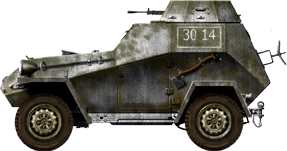
Early production BA-64, winter 1943-44.

A Model 1942 with the first field upgrade, additional driver side sights.

A Model 1942 late production vehicle on the Southern Front, with an unusual camouflage, summer 1944.

BA-64B, the broad track version, up-armored.

Another BA-64B, unknown unit, Northern Front, 1944.

A BA-64B on the Southern Front sector, early 1944.

Rare camouflaged BA-64B.

Another rare livery applied in the field.

A Polish BA-64 (model 1943) in 1945.

One of the few BA-64AT (unknown insignia), armed with the PTRS-41 14.5 mm (0.57 in) antitank rifle, here tested in combat, unknown unit, winter 1943-44.

Captured BA-64, SS Panzer Grenadier Division “Das Reich”, Kursk, July 1943. SS Pzd “Totenkopf” also operated captured vehicles, usually reequipped with a MG 34 or MG 42 machine gun.

The D-8 for comparison, in 1931.
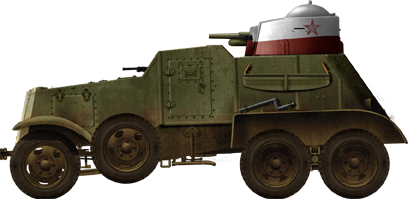
BAI in the early 1930s.
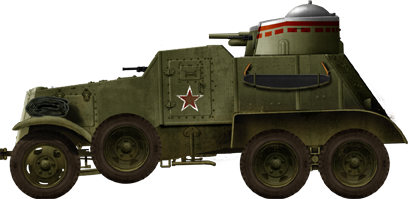
BAI-M in the Far East, 1941.
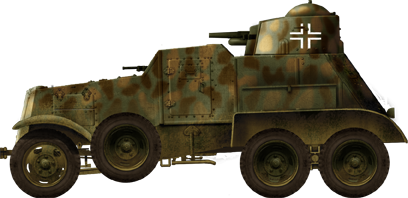
German captured BAI-M in the summer of 1941 or 1942 (from photo references).
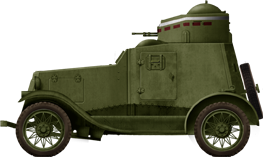
FAI of a regular unit, 1937.
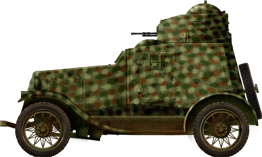
Camouflaged FAI of the Republican forces, Spain 1938.
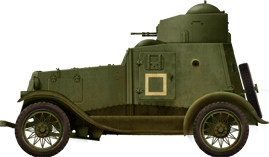
FAI from the organic 7th Independent Motorized Brigade, 1939.
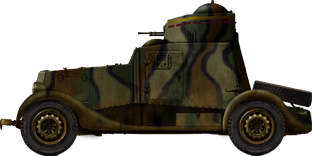
Camouflaged FAI-M, inspired by the model recovered in a swamp near Novgorod, probably lost in 1941.
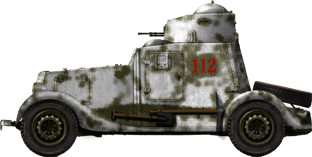
FAI-M during the winter campaign, Karelia, Finland, December 1939.
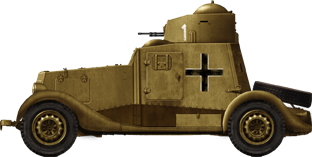
Captured FAI-M used by the war correspondent attached to the 10 Pz.Gren.Div. at Kursk, summer 1943.

Captured FAI-M, Finnish Forces, 1942. About twenty one FAI, FAI-M and BA-20s were captured in the Continuation War.

D-8 armored car.

D-12 armored car.
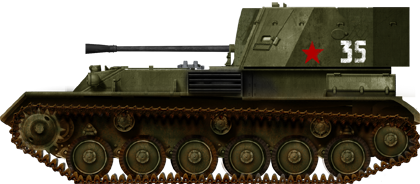
Typical ZSU-37.
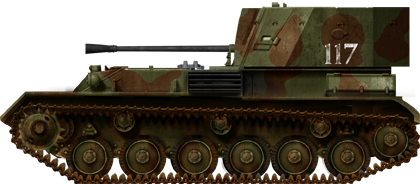
Camouflaged ZSU-37 – Inspired by an illustration on www.cris9.armforc.ru
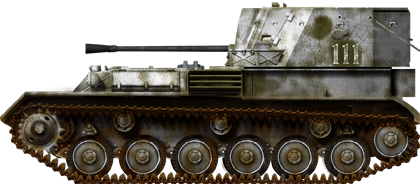
Fictional livery of a ZSU-37 in winter paint, winter 1945.

The standard PTRD-41, with its legs unfolded.

KV-85, unknown unit of the Guards, Eastern Prussia, December 1943.

KV-85, unknown unit, eastern Prussia, fall 1944.

KV-85 of the 1452nd SP gun regiment, Crimea, April 1944.

BT-7-1 or model 1935, with the T-26 model 1933 turret and extra protection, 1941.
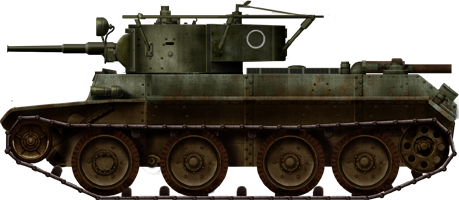
BT-7-1 command version with the horseshoe antenna and upgraded with night projectors.
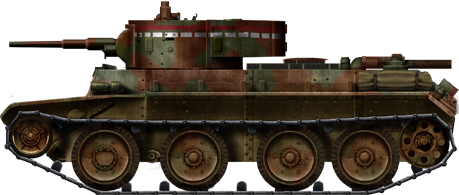
Camouflaged BT-7-1.
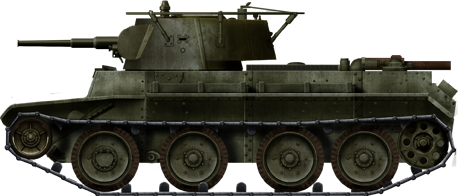
BT-7-2 or model 1938-39, late production, equipped with the T-26 model 1938 turret.

BT-7 Artillery, an infantry support variant equipped with a modified T-28 turret and 75 mm (2.95 in) short barreled howitzer.
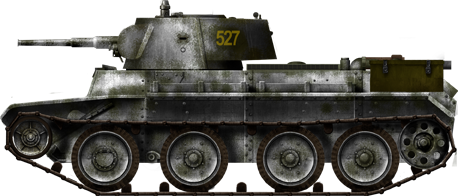
BT-7-2 in winter camouflage, winter 1939.
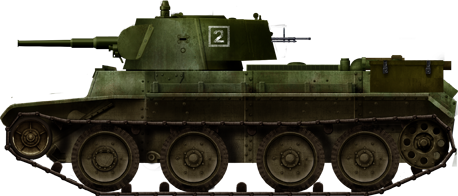
BT-7-2 in 1940.
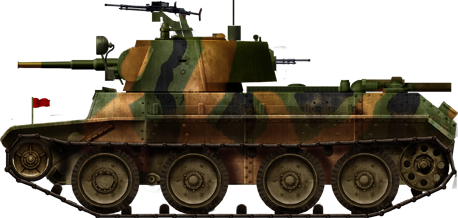
Camouflaged BT-7 in 1938-1939.
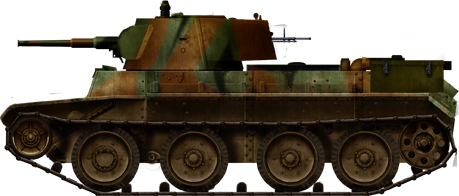
BT-7 model 1938, invasion of Iran, summer 1941.
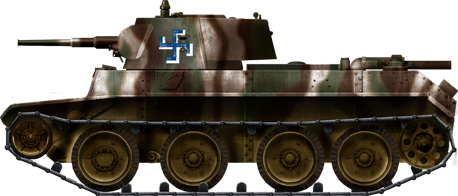
Captured Finnish BT-7, 1943. 56 had been captured during and after the Winter campaign of 1939, and 18 were converted as the BT-42.
.png)
German Panzerkampfwagen BT 735(r), summer 1943.

Early production, summer 1944

ISU-152 of the Red Guards, summer 1944, Bagration offensive.

Camouflaged ISU-152 of the Lviv regiment in Ukraine, July 1944

Finnish ISU-152. Two were captured in the summer of 1944.

Unknown unit, Germany, 1945.

Unknown unit, Germany, 1945.
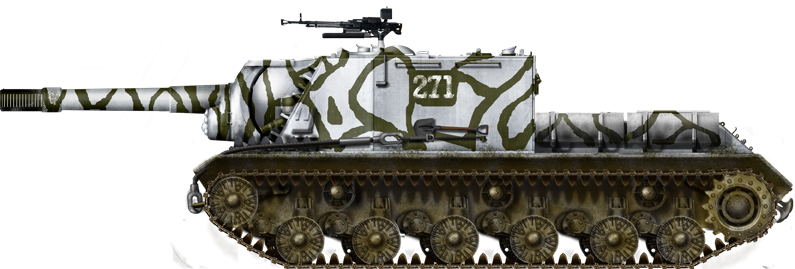
Unknown unit, winter 1944-45. Notice the camouflage improvised on the washable white paint
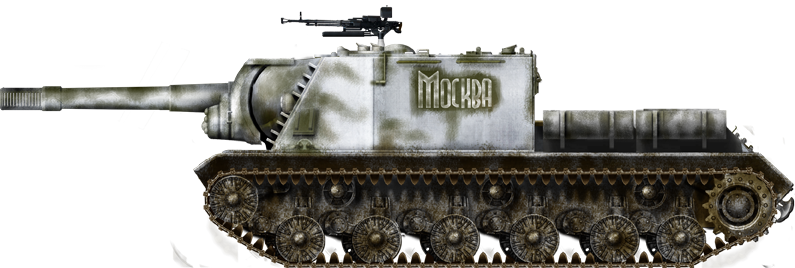
Unknown unit, winter 1944-45, “Moskva”

ISU-152 of the 7th Independent Guards Heavy Tank Battalion, Berlin 1945.

ISU-152 participating in the offensive on Berlin, April 1945. Notice the typical reconnaissance white bands.

Polish ISU-152M, 1960.

Egyptian ISU-152, war of 1973 (Yom Kippur).
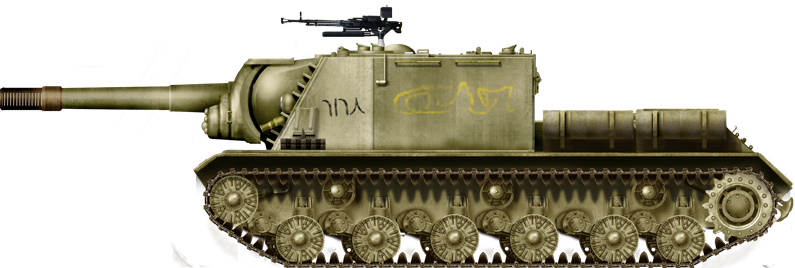
Iraqi ISU-152. Several were still in use during the war of 1993, as mobile artillery support.

Chinese ISU-152 in the 1950s. This one preserved at the CPLA tank museum.

Camouflaged ZiS-30, southern sector, summer 1941

ZiS-30 in the autumn of 1941

ZiS-30 in the Moskow sector, December 1941.

A “what if” operational T-44 in September 1944. In fact, this relatively secret tank never saw action in WW2.

T-44 of an unidentified unit in training, 1945. Notice the full spider roadwheels.

T-44 with dished roadwheels in winter exercises after the war.

The T-44/100 prototype (February 1945). It was manufactured to carry the new gun because the T-34 transmission could not endure the recoil.
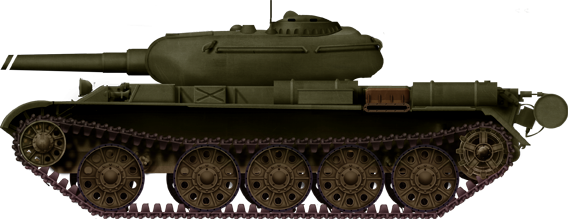
The T-54-1 model 1948, first of the T-54 series and still significantly influenced by the T-44.
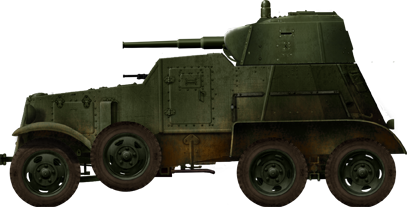
BA-6M, testing the newly developed sloped turret in 1937. Only a handful entered service before the production was shifted on the BA-10.
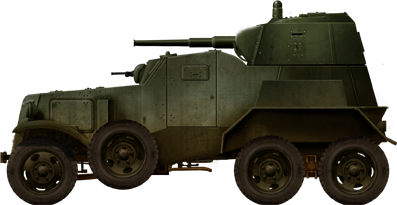
BA-10M in regular olive green livery upon entering service in 1939.
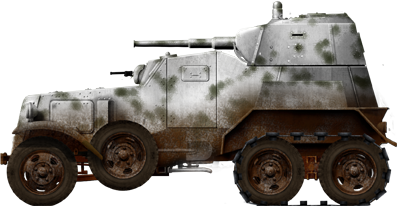
BA-10M, winter camouflage and tracks (Finland, 1939)
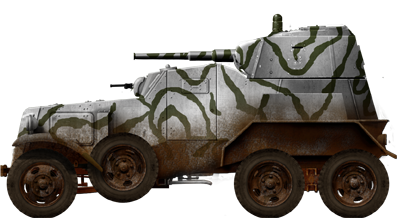
BA-10M, winter camouflage with green vermicels, Finland 1939-40
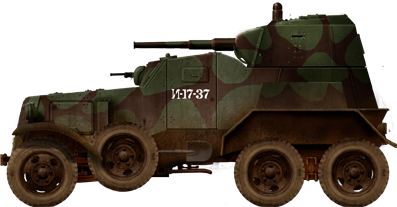
Camouflaged BA-10M, Leningrad Front, summer 1942
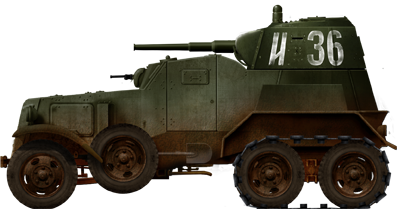
BA-10M with tracks on the rear axle, winter 1942
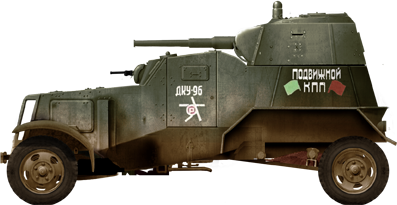
BA-10 with two axles used as mobile check-point, 1st Bielorussian front, October 1944.
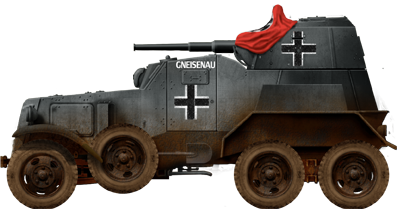
Panzerspähwagen BA 203(r), 402 Bicycle Batallion, winter 1941-42
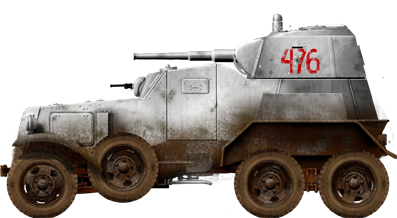
BA-10A, Leningrad Front, winter 1943
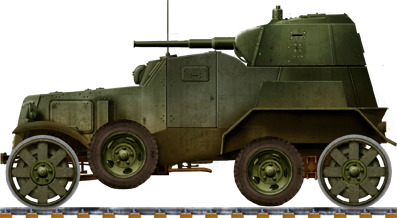
BA-10ZhD, the rail conversion variant.
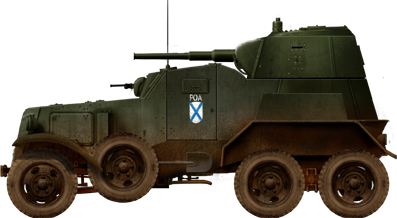
BA-10M of Vlasov’s Russian Legion, 1942.

BA-10M, reportedly in service with the Chinese Nationalist 200th Division, in 1938. Speculative colors only, as this is likely a mis-identification of a BA-3/6.

BA-10M of the Manchukuo Imperial Army, circa February, 1940. This vehicle was originally captured at the Battle of Khalkin Gol by the Imperial Japanese Army.
T-34 Shock: The Soviet Legend in Pictures by Francis Pulham and Will Kerrs
‘T-34 Shock: The Soviet Legend in Pictures’ is the latest must have book on the T-34 tank. The book was authored by Francis Pulham and Will Kerrs, two veterans of Tank Encyclopedia. ‘T-34 Shock’ is the epic story of the T-34’s journey from humble prototype to so-called ‘war-winning legend’. Despite the tank’s fame, little has been written about its design changes. While most tank enthusiasts can differentiate between the ‘T-34/76’ and the ‘T-34-85’, identifying different factory production batches has proven more elusive. Until now.
‘T-34 Shock’ contains 614 photographs, 48 technical drawings, and 28 color plates. The book begins with the antecedents of the T-34, the ill-fated BT ‘fast tank’ series, and the influence of the traumatic Spanish Civil War before moving to an in-depth look at the T-34’s prototypes. After this, every factory production change is cataloged and contextualized, with never-before-seen photographs and stunning technical drawings. Furthermore, four battle stories are also integrated to explain the changing battle context when major production changes take place. The production story is completed with sections on the T-34’s postwar production (and modification) by Czechoslovakia, Poland, and the People’s Republic of China, as well as T-34 variants.
The book price is a very reasonable £40 ($55) for 560 pages, 135,000 words, and of course, the 614 never-before-seen photographs from the author’s personal photograph collection. The book will be a superb tool for both the modeler and the tank nut alike! Do not miss this epic book, available from Amazon.com and all military book stores!
Red Army Auxiliary Armoured Vehicles, 1930–1945 (Images of War), by Alex Tarasov
If you ever wanted to learn about probably the most obscure parts of the Soviet tank forces during the Interwar and WW2 – this book is for you.
The book tells the story of the Soviet auxiliary armor, from the conceptual and doctrinal developments of the 1930s to the fierce battles of the Great Patriotic War.
The author not only pays attention to the technical side, but also examines organizational and doctrinal questions, as well as the role and place of the auxiliary armor, as it was seen by the Soviet pioneers of armored warfare Mikhail Tukhachevsky, Vladimir Triandafillov and Konstantin Kalinovsky.
A significant part of the book is dedicated to real battlefield experiences taken from Soviet combat reports. The author analyses the question of how the lack of auxiliary armor affected the combat efficacy of the Soviet tank troops during the most significant operations of the Great Patriotic War, including:
– the South-Western Front, January 1942
– the 3rd Guards Tank Army in the battles for Kharkov in December 1942–March 1943
– the 2nd Tank Army in January–February 1944, during the battles of the Zhitomir–Berdichev offensive
– the 6th Guards Tank Army in the Manchurian operation in August–September 1945
The book also explores the question of engineering support from 1930 to the Battle of Berlin. The research is based mainly on archival documents never published before and it will be very useful for scholars and researchers.

Fallen Giants: The Combat Debut of the T-35A Tank
By Francis Pulham
The Soviet T-35A is the only five-turreted tank in history to enter production. With a long and proud service history on Soviet parade grounds, the T-35A was forced to adapt to the modern battlefield when the Second World War broke out. Outclassed and outdated, the T-35A tried to hold its own against the German invaders to no avail. For the first time, actual battlefield photographs have been cross-referenced with maps and documents to bring about the most complete look at the T-35A in the Second World War to date.

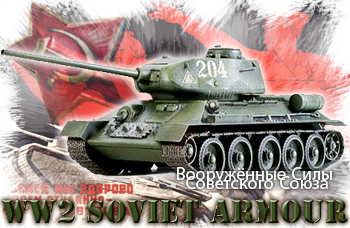



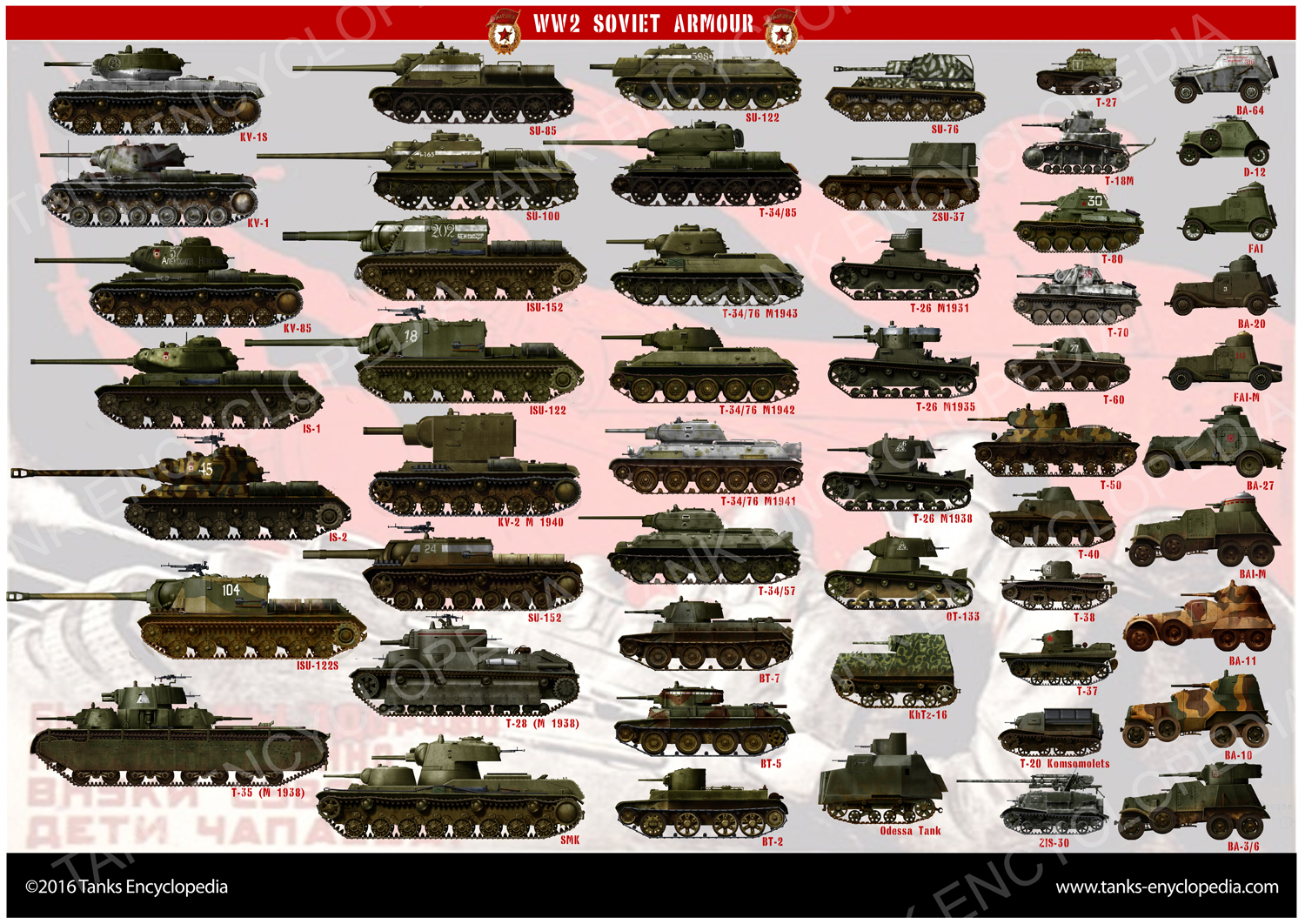
43 replies on “Union of Soviet Socialist Republics (WW2)”
A nice brief review of russian tanks. Thanks.
This site is my go-to reference for armor. Excellent site. Can you direct me to a reference for the Soviet WWII BSNP Reconnaissance Vehicle? It was a T-26 variant without a turret, but with a radio rail. Thanks.
love the tanks
I thought they would have made more than 61 T-35s
T-35 only had a machine gun and is slower than most of the armored cars so idk what the use would really be.
Uhm he means the T-35b Heavy Tank which had a low velocity 76mm cannon and two 45mm low velocity turrets and a hell of a lot of machine guns. The T-35 had poor armor and slow speed. It also required 11 people to operate effectively..That’s a lot of lives to lose.
So, first off, for Seth:
The T-35A Heavy Tank was armed with three cannons and a load of machine-guns. You are probably mistaking it for the T-37A or T-38.
For Billybob: No such thing as a T-35B.
its exists in star wars but not here
German tanks are more important then these tanks . germas lost a war because the russian army was bigger than german army.
Germany lost the war because they had no materials.
Exactly why they lost.
Hi guys!
I am looking for details of Soviet Armoured Recovery vehicles, circa 1943.
Any help would be most appreciated.
Brad
From our Soviet specialist:
It’s a very nebulous thing, to be honest. There was no dedicated recovery vehicle until post-war. Mostly, turretless tanks were used, or tractors. Famous examples are KV-1 recovery tank and T-34 recovery tank with no turrets. Other than that, S-60 and S-65 tractors were used. The Ya-12 was also used for towing light tanks. There was a “high speed” tractor made until 1942 called the C-2, but this was mostly used in the heavy artillery towing role.
– TE Moderator
I love Soviet tanks. So pretty and destructive.
I was absolutely sure, that there was an article about the soviet Tank Grote. What happened to it?
Hello Markus!
There is (and never was) any article on the Tank Grotte. However, the topic is present in the T-35-1/T-35-2 page.
Hello My name is Mikhail
I wanted to know if you are going to/working on the SU-57B?
Here is a link to some info, if you need it
http://www.wardrawings.be/WW2/Files/1-Vehicles/Allies/2-USSR/05-TankDestroyers/RussianHetzer/File/Russian-Hetzer.htm
Hello Mikhail!
We will be covering the SU-57B sooner or later. However, unfortunately, it is not being worked on right now.
All the best!
I could be better if you could say about all Russian tanks like kl vi or some other tanks like a-20 bt 2 but this site it’s very good starters
Hello Filippos,
The KV-VI, A-20 and BT-2 are all covered on our website:
https://www.tanks-encyclopedia.com/ww2/soviet/KV_VI_Fake_Tanks.php
https://www.tanks-encyclopedia.com/ww2/soviet/soviet_a32_t32.php
https://www.tanks-encyclopedia.com/ww2/soviet/soviet_BT-2.php
I think IS-10 is T-10 or IS-8. I can’t remember IS-10 heavy tank.
Started off as IS-5/Object 730, then redesignated IS-8, then IS-10. Following the death of Stalin, it was redesignated T-10.
IS stands for Joseph Stalin.
Very cool site. I’m a little confused between the IS-85 and IS-1 though. To me they look almost identical in appearance and stats.
They are the same thing, just two different names for it.
Undoubtedly, it was a long way for the T-34 that the Red Army could ultimately win WW2. However, the price was enormous, as about 44,000 T-34 tanks (or 82 per-cent of total production) was a total loss.
Russian arms production during WW2 amounted to 99,150 armored vehicles (including all kinds of assault guns, tank destroyers and self-propelled guns) from June 1941 to May 1945. There were also delivered 11,900 tanks and self-propelled guns, which are part of Lend-Lease program by the Western Allies.
This kill-to-loss ratio destroys another recent myth, which has recently come again into fashion, which refers to the situation on the Eastern Front. It is said that the Russians could have won the Second World War without any support from the US or Commonwealth forces, above all because of their large quantity of produced T-34 tanks.
This assertion is untenable, as is shown by the loss ratio – and even before the increased production in Germany had been taken into account, because of the absence of the Allied bombing war. At the same time, the increasing German air superiority on the Eastern Front from 1943 on would have acted, while the Red Army would have been deprived of half of its motorized transport, which consisted of Lend-Lease vehicles.
The 9,000 to 10,000 88mm Flak guns, which would not have been necessary to defend Germany against Allied air raids, could have been used as an effective anti-tank force on the Eastern Front.
In addition, e.g. tor the approximately 1,000 then non-necessary German U-boats, other war materials – such as tanks – could have been produced.
I maybe wrong but this list seems to be missing the Churchills supplied to the the USSR . Mark IV Churchills were sent in numbers and actually fought at The Battle of Kursk.
There is indeed no chapter on lend-lease tanks in this page. We are working on this. Further info on Churchill in Soviet service can be found in the meantime in the Churchill page.
I am surprised you don’t have an entry on T-28 (when you have one on T-35). I believe they built 500 or so T-28 to only about 60 T-35.
T-28 saw action in Winter War
true the t-28 was produced in greater numbers than the t-35 but, the t-28 kept being captured by the finish army and there where very few variants so this tank became obsolete in 1941.
another fake tank, KV-7 Mod.1941, Trumpeter has a 1/35 scale model kit , Its a KV tank sporting 3 barrels, 2 45 MM and a 76mm gun . From the look of this model kit it would not be very practical in real life , so i wanted to put this out there for real evaluation from experts, if this tank actually made it to the prototype stage. I have not found any official information online about this tank, even on Wikipedia it does not list this tank,so you may have to add another fake Soviet Tank to the list.
The KV-7 was a real project and was armed with 2 or 3 weapons. There is plenty of information and photos online.
Who wrote/contributed to this article?
This is an old article from the days that Wikipedia was the main source. It was probably written by a collection of our early contributors. Hopefully it can be replaced some day.
Gareth (TE Manager)
Will there be an article for the t-100LT project or object 263?
Or could I contribute?
Hello,
Yes, both topics are planned, but they will go into the Cold War section.
Mb i thought I send it into the cold war area
Um excuse me, could we get an article on the T35-II? it was a prototype T35 variant that had many advanced improvements, such as a hull gun, sloped armor, and better visibility.
How come the BT-2 is the only fast tank with an article? It hardly saw any use, unlike the bt-5 and bt-7.
Hi Rowan, unfortunately we do not have articles on the BT-5 and BT-7.
Best Regards,
Pavel
Isn’t the Katyusha supposed to be in here?
Hi, of course it should, however we do not have articles on them.
Best Regards,
Pavel
Is there a SU-100Y Tank article? if there isn’t there needs to be one